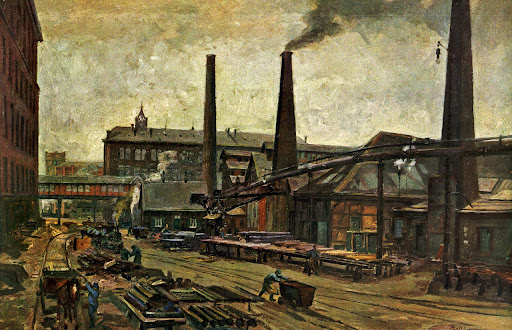Germany's Post-War Industrial Revolution: From Ruins to Global Powerhouse

After World War II, Germany was a nation in physical and economic ruins. But what followed was one of the most remarkable industrial recoveries in modern history. Through strategic policy, innovation, and a relentless work ethic, Germany didn’t just rebuild—it redefined what industrial excellence looks like in the modern world.
The Ruins of 1945: Starting from Zero
In May 1945, Germany faced:
- Widespread destruction of factories and infrastructure
- Severe shortages of materials, labor, and energy
- Divided governance, later formalized as West and East Germany
But out of this devastation, West Germany launched a focused, pragmatic economic recovery that would transform it into an export and engineering superpower.
The Wirtschaftswunder: The Economic Miracle (1950s–60s)
Between 1950 and 1963, West Germany’s GDP more than tripled. This period—known as the Wirtschaftswunder (economic miracle)—was driven by:
- The Marshall Plan: U.S. aid provided capital, equipment, and confidence.
- Social Market Economy: A mix of capitalist dynamics with strong worker protections.
- Skilled Workforce: Vocational training systems produced industry-ready labor.
- Exports First: Machinery, chemicals, and vehicles became global staples.
Key industries like automotive (Volkswagen, Mercedes-Benz) and precision engineering became flagships of German quality.
Heavy Industry to High Tech (1970s–1990s)
Germany evolved again during the 1970s and beyond:
- Energy crises pushed efficiency and renewable R&D
- Reunification in 1990 added industrial potential from East Germany
- Automation and robotics transformed factory floors
- Global expansion: German firms became multinationals with supply chains across the world
During this era, Germany also became a global leader in environmental engineering, laying the foundation for its modern sustainability push.
The Backbone: Germany’s Mittelstand
The Mittelstand—Germany’s network of small and medium-sized, often family-owned firms—is the hidden engine behind its industrial success.
- Highly specialized in sectors like machine tools, optics, and automation
- Focus on craftsmanship, innovation, and long-term strategy
- Strong roots in local communities but global in export reach
These companies power Germany’s dominance in industrial equipment, components, and process engineering.
21st Century Shift: Digital and Green Industry
Today, Germany’s industrial model is shifting again:
- Industry 4.0: AI, IoT, and data integration in manufacturing
- Green transformation: Major investments in hydrogen, electrification, and sustainable materials
- Dual education systems continue to produce world-class technicians and engineers
Germany is also leading the EU’s Green Deal industrial strategy, proving that advanced manufacturing and environmental responsibility can go hand in hand.
Key Sectors Driving Modern Growth
- Automotive: VW Group, BMW, and Daimler transitioning to EVs
- Engineering and Robotics: Siemens, Bosch, KUKA at the digital frontier
- Pharma and Chemicals: Bayer, BASF driving biotech and green chemistry
- Renewables and Clean Tech: Wind, hydrogen, and battery innovation hubs across the country
Global Leadership Through Industrial DNA
Germany isn’t the cheapest manufacturer—but it offers:
- Precision
- Durability
- Sustainability
- Trust
This brand of “Made in Germany” continues to command global respect, even as supply chains evolve and digital tools reshape industry.
Conclusion: From Rubble to Resilience
Germany’s post-war industrial journey isn’t just about economics—it’s about identity. Rebuilt from ashes with discipline, vision, and skill, the country has turned manufacturing into a source of national strength, pride, and global influence.
Its story proves that industry—when built on innovation and values—can be the foundation of long-term prosperity.